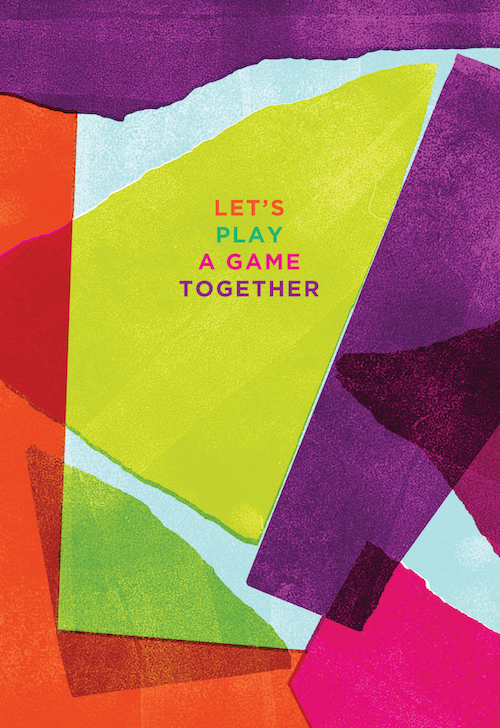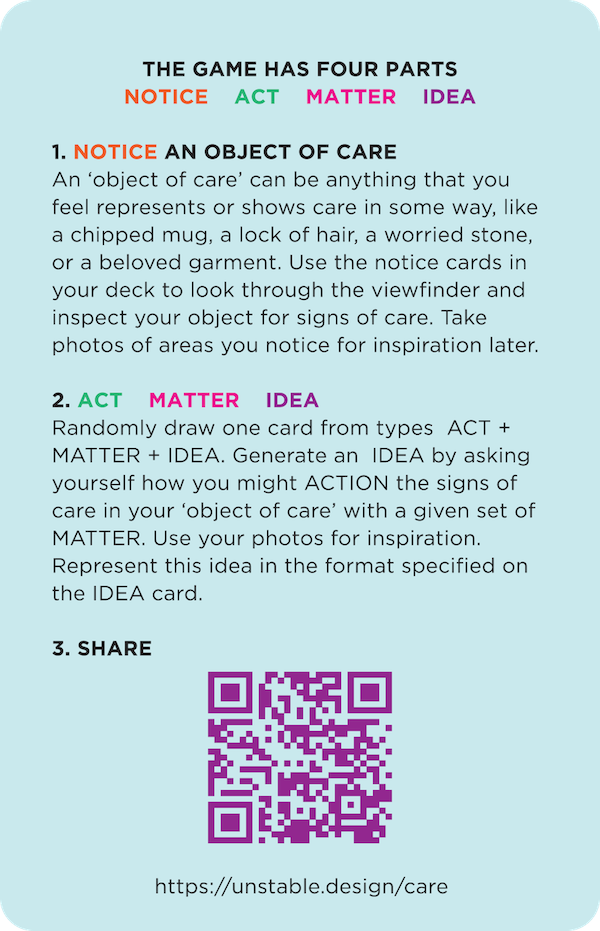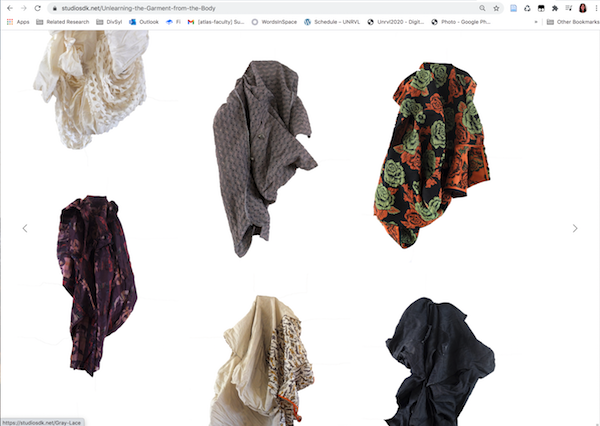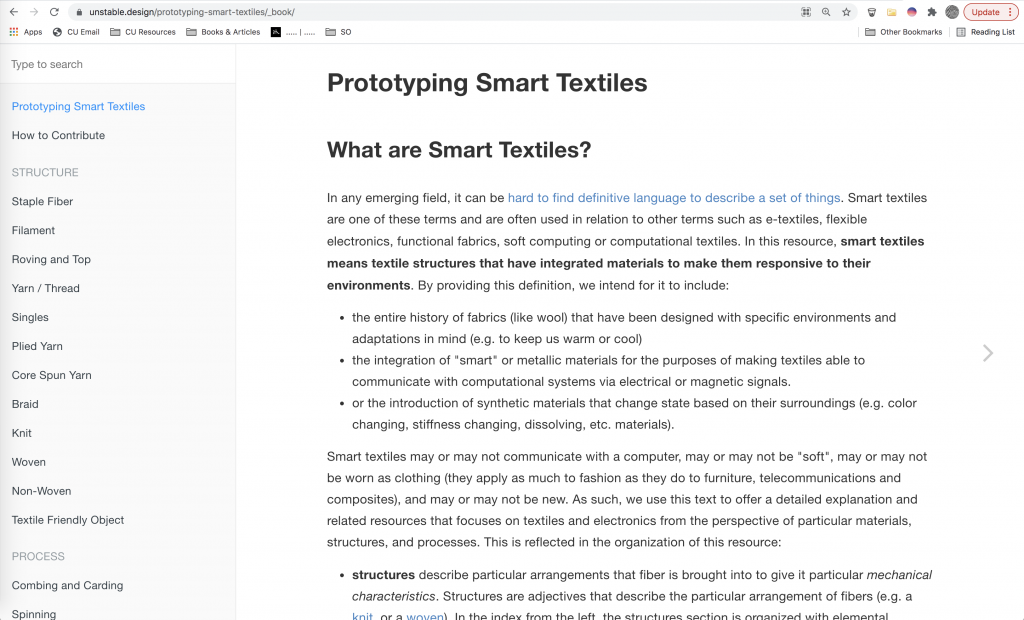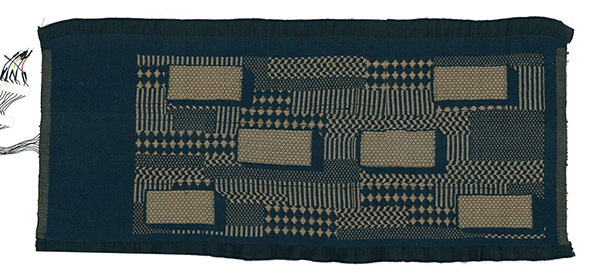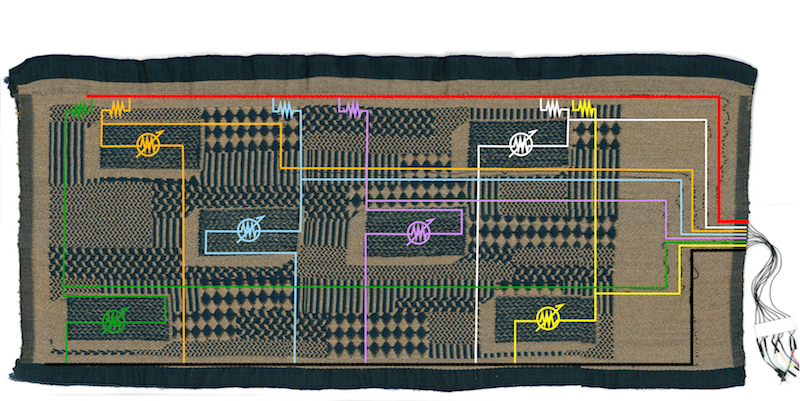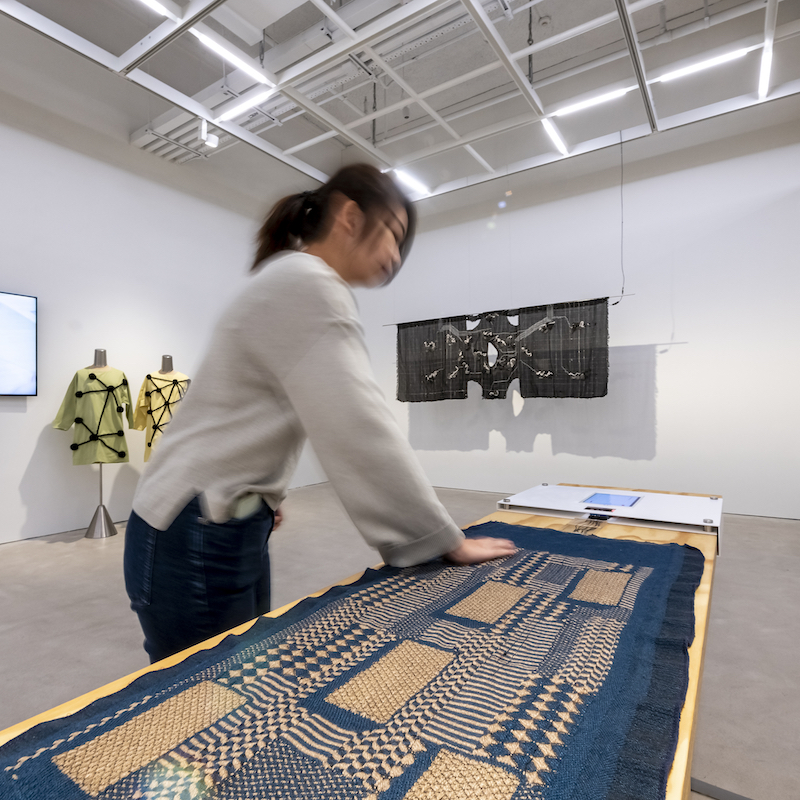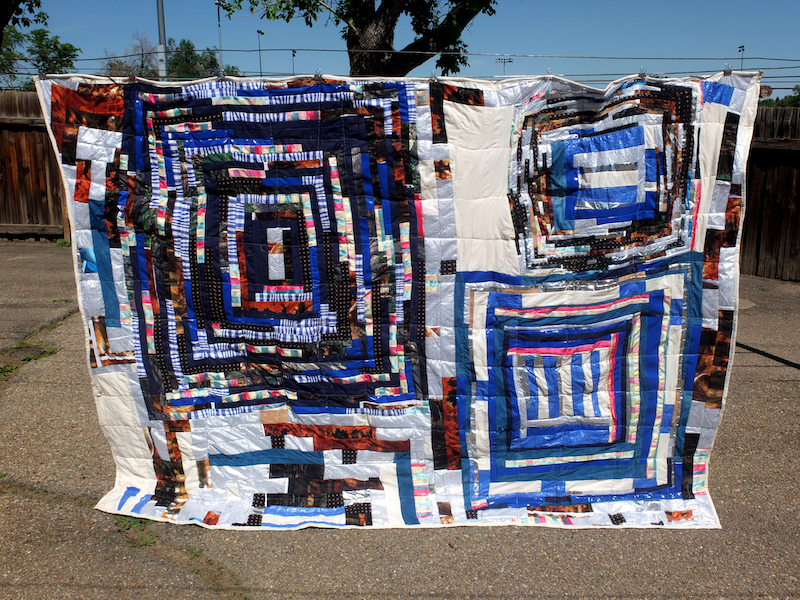This publication includes a workbook on weave structure as well as a reflection on how HCI (Human-Computer Interaction) researchers might look to craft publications for inspiration when communicating the contribution of craft-oriented research. The workbook included in this publication is intended for HCI researchers to learn the fundamentals of weave structure in the context of weaving force sensors. The project emerged in collaboration between the lab and Experimental Weaver in Residence Etta Sandry and our shared interests in communicating the technicality and fundamentals of weaving to broad audiences.
Citation:
Laura Devendorf, Sasha de Koninck, and Etta Sandry. 2022. An Introduction to Weave Structure for HCI: A How-to and Reflection on Modes of Exchange. In Designing Interactive Systems Conference (DIS ’22). Association for Computing Machinery, New York, NY, USA, 629–642. https://doi.org/10.1145/3532106.3534567
Full Publication and Talk:
Download the Publication
Watch the Video
Notes:
We will be reforming this activity book into an interactive format that’s linked with AdaCAD. Stay posted.
